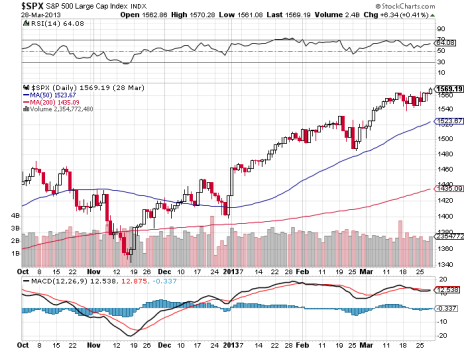Our national nightmare is almost over: tomorrow, we finally get to elect a 45th President, mercifully ending the most negative and toxic campaign season in U.S. history. If history is any guide, the volatile market that has preceded this election should also be put out of its misery.
How volatile has the market been of late? For starters, the Volatility S&P (VIX) index—a.k.a the “investor fear gauge”—has spiked 72% in the last two weeks alone, reaching its highest level since June. Stocks, meanwhile, have gone the other direction; the S&P 500 dipped below four-month support at 2,125 last week, and has since sunk all the way below 2,100. The Dow and the Nasdaq have gone through similar declines over the past two weeks. By any measure, that’s a volatile market.
It’s nothing new, however. Any Presidential election brings uncertainty, anxiety and outright fear with it as voting day draws near, and those emotions spill into Wall Street’s every pore. But that’s particularly the case this year, as investors brace for what might happen once one of the least popular candidates ever gets voted into America’s highest office tomorrow.
Now, given the polarizing nature of the two candidates—even by today’s stubbornly partisan standards—things could be different on Wall Street once all that uncertainty becomes reality after Tuesday’s vote (barring another 2000 “hanging chads” situation, of course). But I doubt it. Even if Trump wins, this volatile market will eventually resume its normal course, whatever that may be.
Mike Cintolo, our resident growth investing expert and market historian, wrote about this very subject in a recent issue of his Cabot Growth Investor advisory. Here’s what he said:
“If the election looks like a tossup (i.e., uncertainty), you’ll often see the market sell off a bit before Election Day.
“After the election, there is often a brief, one-?to five-day reaction. The reaction can be very sharp if the outcome was unexpected; Brexit was a perfect example, as was the six-day, 10% plunge in the Dow when Truman beat Dewey in 1948. (Dewey was considered a huge favorite.)
“However, following these brief shocks, the market almost always continues its major trend.”
Indeed, as Mike goes on to cite, there was a volatile market in 2012 prior to the Obama vs. Romney election—hardly the scorched-earth, fear-mongering affair that Clinton vs. Trump has devolved into. Stocks tumbled nearly 7% from the beginning of October until about mid-November, about a week after Obama was re-elected. After that, they resumed their long-term uptrend.
Take a look at this six-month chart of the S&P 500 from before and after the 2012 election:
Also similar to this year, the VIX spiked 30% in the months prior to the 2012 election. Within two weeks of the election, it had already settled back to normal levels.
Prior to the October swoon this year, stocks had been trending upward, advancing 19% from their February lows and cracking new all-time highs in August. The market had settled into a holding pattern since, until breaking to the downside amid rising October volatility.
If recent history is any guide, stocks will resume their February-through-August upward trend once the election is over. There are other factors that could keep the market down, of course—the uncertainty of the next interest rate hike, the ongoing Brexit fallout, geopolitical turmoil around the globe. But at the very least, the volatile market of the past six weeks should settle back into its August-September holding pattern well before you sit down for Thanksgiving dinner.
Even if Trump wins.

